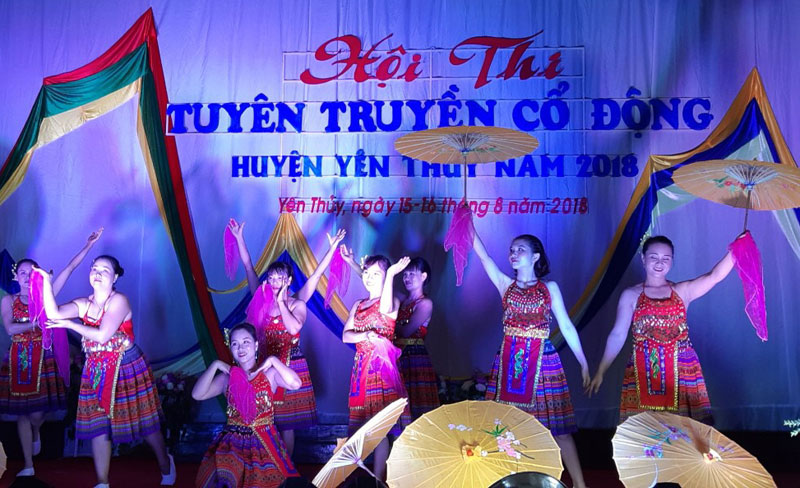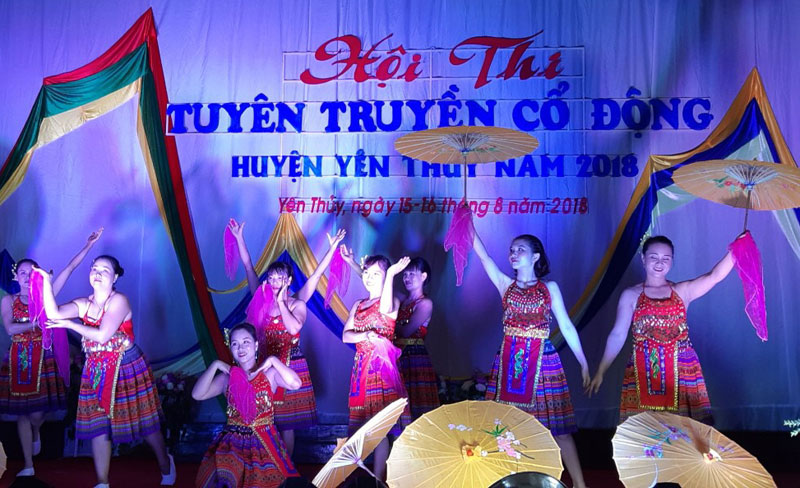


As a regulation, on the day of the
Independence Day, most of those who are working or studying in the remote areas
would try to arrange their work to be back to their hometown, their families
and neighbors. Along with the warm atmosphere, together in the family meal,
everyone is eagerly waiting to be accompanied by the sound of the dance
performed by their own local people. On these days, most of the communes and
towns in Yen Thuy district organize cultural activities, arts and sports to
celebrate the National Day of the country. The Independence Day becomes a
common holiday for the entire people and it is also an opportunity to meet,
exchange, and connect the villagers, the neighborhood, which will become the
beauty of traditional culture. This is also the occasion to build in the youth
pride of national traditions, education of love for the homeland, gratitude to
the Party, Uncle Ho.

The cultural art performance movement has
been improved, meeting the demand of cultural enjoyment of the local people.
Photo: The art performance at the propaganda contest of Yen Thuy district in
2018.
We were in Da Phuc commune in the late
afternoon, at which time the women in the art performance team were practicing
together to prepare their performances for the local people in the occasion of
2nd September. Mr. Bui Van Cong, a civil staff of Da Phuc commune
said: On the occasion of September 2nd, besides having reunion meals with the
family and family clans, people here find that the activities of exchanging art
performances and sports happening joyfully and exciting not only create joyful
atmosphere, but also encourage the local people in the commune. On these days,
to take the advantage of free time, the art performance teams practice together
to have special performances to serve the local people.
. Currently, 100% of communes, hamlets and
villages have public art performance teams and entertainment clubs. Most of the
entertainment groups have from 15 to 25 members, all of whom share the passion
of singing, dancing and folk music.